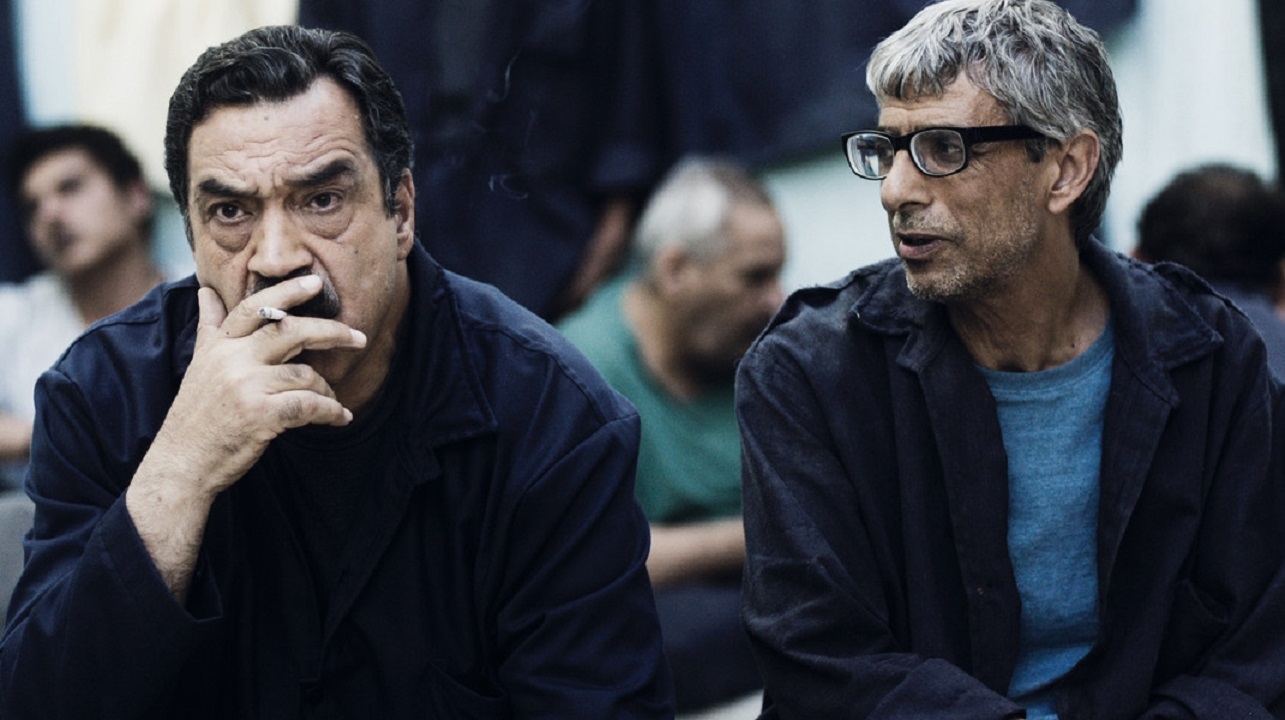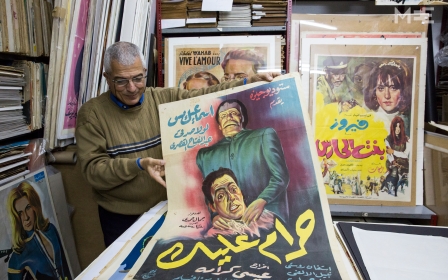Not just a Hollywood backdrop: Filmmakers put Jordanian reality into heart of story

TORONTO, Canada - For Mahmoud al-Massad, the need for Jordanians to see themselves on the big screen cannot be understated.
And every Jordanian can see himself or herself in Ahmad, the mild-mannered contractor who suddenly finds himself serving out a three-month prison sentence in Massad’s latest film, Blessed Benefit (Inshallah Estafadit), the director says.
“For me, this film represents maybe 99 percent [of the people in Jordan],” Massad told Middle East Eye from the Toronto International Film Festival (TIFF), where Blessed Benefit had its world premiere on 9 September.
“No one can see this film… and could say this guy [Ahmad] is not related to me in anything. No way. He can be your neighbour, he can be your brother; he can be your father. Ahmad is in every Jordanian person,” Massad said.
Ahmad’s misfortunes begin after he gets paid for a contractor job that he never completes. A judge sentences him to three months in prison and Ahmad instructs his cousin to pay bail to get him out ahead of the Muslim holiday of Eid.
But the bail money never comes and his cousin embarks on a series of attempts to make up the cash, navigating layers of Jordanian bureaucracy, corruption, and sheer absurdity along the way.
The film is sharp as it weaves the simple story of how one man’s life can, on the surface, be dramatically turned around, and yet never truly change, as he encounters the same characters, social hierarchies and scams both inside and outside of prison.
Being behind bars also serves as an escape from the frenetic pace and stress of daily life in Jordan, and ironically, gives Ahmad some much-needed respite and peace of mind.
Using humour to probe the state of Jordanian society today, Massad said his “big, big dream is to show the film in Jordan”. He wants Jordanians to be exposed to “a film reflecting themselves and laugh about it,” he said.
“I’m trying to show they [the characters] are just Jordanian guys, they try to get along with their daily life. The whole film is just maybe raising a question mark for the decision-makers: Why [did] you [bring] us, and who brought the country, to this stage?”
Building a film industry
Jordan has provided the backdrop to a handful of high-profile American films, from Harrison Ford running through the ancient caves of Petra in 1989’s Indiana Jones and the Last Crusade, to subbing in for neighbouring Iraq in Kathryn Bigelow’s more recent Academy Award-winning war film, The Hurt Locker.
But the making of Jordanian films with high production values in Jordan is fairly recent, according to Baha Othman, a Jordanian producer based in Amman who has been involved in filmmaking for about 15 years.
Othman said that while the TV industry has always been strong in Jordan, the country’s political and geographical location has caused film production in the country to fluctuate over the years.
“Our industry is not new, if you want to talk about the media industry, but we are definitely new when it comes to film and also to high production value productions,” Othman told Middle East Eye.
Othman said a shift took place in the early 2000s, when King Abdullah II established the Royal Jordanian Film Commission to develop a competitive Jordanian film industry and propel Jordan into “a leading cultural and economic role, regionally and internationally”.
The commission encourages training and education programmes, provides services to producers, and seeks to foster a “film culture” in the country.
The first school devoted entirely to filmmaking also opened in Jordan in 2008. The Red Sea Institute of Cinematic Arts (RSICA) was launched in partnership with the renowned School of Cinematic Arts at the University of Southern California (USC).
Othman, one of the school’s founders, explained that RSICA aimed to equip its graduates with skills they could both use to make a living in the industry – sound engineering, editing, cinematography – and also pursue their passions in writing, producing and directing.
“So now we have directors working as cinematographers to make a living until they can produce their film or their script, and that was a very successful idea. Our graduates were always fully equipped to face life and the industry,” he said.
The school, however, struggled financially after the global recession hit in 2008 and it was forced to close in 2013.
“It’s still a dream, you know, for me personally,” said Othman, about offering a strong film programme in Jordan. “Nothing [would make] me happier than reopening this school or maybe starting a new programme.”
'Struggle in Jerash'
The first feature film shot in Jordan was Wassif Sheik Yassin’s Struggle in Jerash, which was made and released in 1957.
Up until then, with Jordan under the control of the British, it was illegal for Jordanians to film in their own country, according to film critic and historian Adnan Madanat.
“To take footage was banned,” Madanat said in an interview in 2010. “If a Jordanian was caught taking footage, he would be arrested and thrown in jail. Lots of foreign reporters would come to film but it was difficult for Jordanians to do so. So it is important that the first movie came after independence.”
A group of craftsmen originally from Palestine – where cinema and film culture existed prior to the establishment of the state of Israel in 1948 – were behind the making of Struggle in Jerash, Madanat explained.
The film was shot with a 35mm camera, and the crew struggled to synchronise the video and audio tracks, he said. But the film garnered tremendous interest in Jordan, despite being forbidden initially by the country’s censorship council for showing kissing scenes and women in immodest dress.
“Sadly, the original print – we don’t know where it is. It’s probably impossible to find now,” Madanat said.
Expanding Jordanian cinema
For Massad, it is important to treat films and filmmaking as an integral part of the local culture in Jordan, and in the Middle East more generally. He said that changing that mindset will help get more Jordanian stories onto the screen and encourage more film programmes and better funding for local productions.
“I wish we could make more films like that, telling our own story,” Massad said.
Still, international and local audiences seem to be paying closer attention to Jordanian films. The country recently drew international acclaim with Theeb, a film about a young Bedouin boy in the desert of Wadi Rum, in southern Jordan, during World War I.
Made by British-Jordanian director Naji Abu Nowar, it was the first Jordanian film nominated for an Academy Award in 2015, in the best foreign language film category.
For Othman, the success of Theeb is evidence that Jordan is “a country of potential”. “We have big ideas, but we are looking to provide the tools to produce those ideas and reach out to the world,” he said.
He said that Jordanian filmmakers should start by developing simple stories and presenting them to audiences in a clear, linear way.
“I think the reason why this film [Theeb] is very successful, [is] it’s true. It’s a real story, it’s simple, it’s just telling you a story, without any of the complications of the industry,” he said.
“We have a lot of stories that will blow everyone’s mind, I can tell you that. I can promise you that.”
Middle East Eye propose une couverture et une analyse indépendantes et incomparables du Moyen-Orient, de l’Afrique du Nord et d’autres régions du monde. Pour en savoir plus sur la reprise de ce contenu et les frais qui s’appliquent, veuillez remplir ce formulaire [en anglais]. Pour en savoir plus sur MEE, cliquez ici [en anglais].




